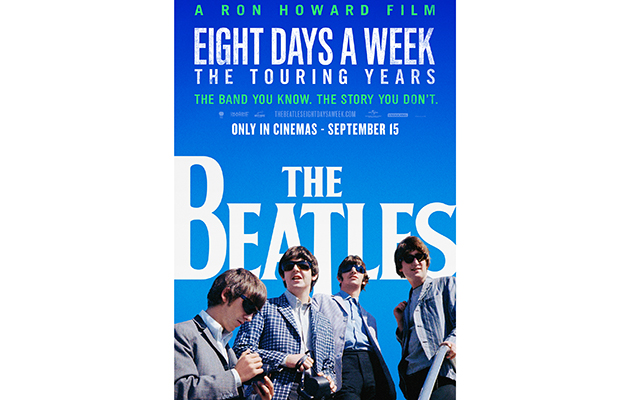When the statistics threaten to overwhelm – crowd attendance, cities played, records broken – it is important to remember the little details. Paul McCartney, for instance, will tell you how he and his bandmates used to arrive at venues during The Beatles’ earliest days wearing their ordinary clothes, each carrying a small suitcase containing a shirt, a pair of trousers and, finally, “the Beatle boots”. They would look at one another, identically dressed, and see reflected back a unified force. It is as this tightly defined unit that The Beatles tore up stages from Manchester to Melbourne via Tokyo’s Budokan and San Francisco’s Candlestick Park – a trajectory that is charted in Ron Howard’s excellent documentary.
It is hard to find something genuinely ‘new’ to say about The Beatles. But Howard – a diligent, journeyman filmmaker – sharpens the focus of his story, relying on assiduously researched footage of the Fabs – in concert, on planes, during interviews – to illustrate the ways in which the band adapted to their rigorous touring schedules and the changing world around them.

The LOLZ come thick and fast early doors – asked why they excite fans so much, John Lennon replies, “I don’t know, if we did we’d form another group and become managers.” Later, battle fatigue begins to set in. Among the talking heads, American broadcast journalist Larry Kane is superb as he details his experiences embedded with The Beatles during their August/September 1964 tour of America and Canada. In Vancouver, 7,000 people rushed the stage, “240 kids wound up in hospital,” Kane recalls. “No one was prepared for this.” The lead up to a show at Gator Bowl Stadium in Jacksonville, Florida threatens to turn ugly when the band make clear during interviews that they won’t play to a segregated audience.
Along the way, there are bomb scares, Beatles records are publicly burned, and always the screaming – like sheets of feedback. The performances themselves run on adrenalin. A ferocious “Roll Over Beethoven” from Stockholm sounds like the MC5, “I Saw Her Standing There” from the Washington DC Coliseum threatens to collapse under its own velocity. Ringo is revealed to have the chops of a hardcore drummer.
Shea Stadium is viewed, first of all, from inside the helicopter ferrying the band to the site; then there is the long, long walk from the dug-out to the stage and, finally, the woefully inadequate house amplification system. In a neat bit of post-production editing, Giles Martin drops the screams of the crowd out so it is possible to hear exactly how The Beatles sounded on the day, projected through the ground’s tannoy system: tinny, essentially. No wonder, come 1966, the band are ready to quit life on the road in favour of the comparatively stable environs of Abbey Road Studio Two.

Admittedly, the title is mildly disingenuous. There are visits to the sets of A Hard Day’s Night and Help! and lengthy pit stops in the studio, extensively illustrated with stills photography, where the chat between takes nods at the organic nature of the creative process; wreathed in animated cigarette smoke, this is evidently where the magic happens. Additionally, the film dwells on the controversial ‘butcher’ cover for the American Yesterday And Today album – while intended to signify the band’s increasing interest in the avant garde it also feels like an explicit nod to the US market, where Howard’s film will enjoy an extended run on the Hulu streaming service.
Some of the talking heads are distractions. It’s nice that Whoopi Goldberg is willing to share a heartwarming story about how she came to see The Beatles at Shea Stadium; but it is figures like Kane and Ed Freeman, the band’s American roadie, whose inside-the-tent memories are far more valuable. Curiously, next to the archive footage of their younger, vigorous selves, McCartney and Ringo Starr seem almost peripheral to their own story.
Martin Scorsese’s George Harrison’s documentary is still the closest at capturing the full-tilt craziness of being in The Beatles, but Howard’s film provides a robust companion piece. Eight Days A Week ends with extended footage from The Beatles’ final gig on the rooftop of Apple’s Savile Row offices – a tantalising glimpse of the still unreleased Let It Be film, the band older, hairier and on the brink of collapse. “By the end things became quite complicated,” reflects McCartney wistfully. “But at the beginning, it was quite simple.”
Follow me on Twitter @MichaelBonner
THE BEATLES: EIGHT DAYS A WEEK – THE TOURING YEARS IS RELEASED IN CINEMAS ON SEPTEMBER 15
Uncut: the spiritual home of great rock music.


